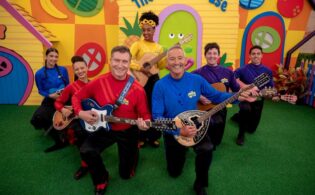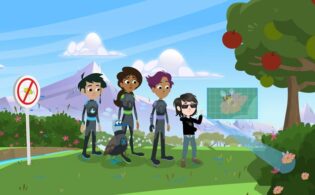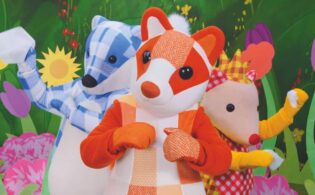Leading programmers share how they are finding breakout properties amid the abundance of content available on the market today.
Between the raft of new commissions making their way onto the market and shows that have been canceled by one streamer or another as they refocus their strategies, there is an awful lot of kids’ content available in the landscape today. As buyers sift through this abundance of choice, they’re having to be especially selective as they look for new ways to keep young ones engaged amid the myriad other options they have for their entertainment—while also making sure those shows are available on all the platforms kids are using today.
At Paramount Global in the U.K. and Ireland, Louise Bucknole, general manager of kids and family, heads up a portfolio that includes the Milkshake! free-to-air block and the Nickelodeon portfolio of channels. “We have VOD, linear channels, a FAST platform with Pluto TV and an SVOD with Paramount+,” she explains. “We’re always looking for content for all of these platforms, so acquisitions are really important.” These sit alongside the company’s internal content pipeline. “We do a lot of commissioning in the U.K. for the Milkshake! block, which is on Channel 5, so we look at about two to three additional acquisitions to bolster what we have and complement that in the U.K. And for the Nick network, this could be anything from preschool to older kids, live action and animation. We look at what gaps we have. It could be franchises or particular IP that is of interest to us.”
As director of kids’ content for Sky in the U.K. and Ireland, Lucy Murphy is catering to an audience of 1- to 10-year-olds. They expect to see “premium entertainment” across multiple genres and formats, she says. “We have around 10,000 episodes of on-demand content, and a lot of that comes from the partner channel deals that we have.” New to her remit is a Sky Kids linear service, targeting children aged 1 to 7. “In terms of the acquisition deals we do, we buy large packages, e.g., from LEGO or DreamWorks Animation, but we also cherry-pick one-off titles so that we’ve got that entire demographic served with the right shows that they want to watch.”
Acquisitions are also crucial at French-Canadian broadcaster TFO, according to Marianne Lambert, director of acquisitions and co-productions, noting they make up about 85 percent of the slate. “We also do co-productions and independent productions, but mostly, for all our platforms, it’s acquisitions.” TFO operates a linear channel for kids, an educational website for teachers and TFO.org, “which we’re transitioning into an OTT platform with our linear channel. We also have a YouTube channel, but we mostly use it for promotional purposes. When we buy, it’s for all those platforms at the same time.”
HappyKids, meanwhile, a connected TV streaming app, is entirely reliant on acquisitions. David Di Lorenzo, senior VP of kids and family for Future Today, the app’s parent company, is on the lookout for a broad range, “whether it’s early-learning content from CoComelon or user-generated content in gaming from Roblox or Minecraft or popular IPs like Transformersor Ninjago to YouTube [channels] like K-City or Kids Diana Show. Today’s audience is looking for broad-based content across multiple platforms. Our job is to find content that our audience wants to watch.”
EYES WIDE OPEN
As for what fits that bill, each buyer surveyed here has specific brand remits they keep in mind when filtering through available options. Murphy at Sky Kids says she starts with, “Are kids going to love what they see? Is it premium, distinctive and original? Just as important, are parents going to love it too? Especially when you’re acquiring and commissioning shows for younger children, it’s really important that parents feel good about what their children are watching.”
Bucknole stresses the importance of British content for Milkshake!, although she and her teams will consider shows from elsewhere. “We celebrate kids and families within this content.” Nickelodeon’s approach is “kids first,” Bucknole notes. “We want to focus on their point of view. It’s larger-than-life characters and how we bring that slice of life into our content. We follow the brand values of heart, smart and fart! We want it to be entertaining to them. We want them to learn something and also feel that emotion as well.”
For Lambert, content has to be in French, “which is not that easy to find,” she says. “We started programming a lot of dubbed series, so that’s helped a lot. It has to be educational, but it doesn’t have to be about a specific [subject] like math or science. It can be loosely educational. It can be about social-emotional responses, living in a group, relationships, critical thinking. It’s really important to us that casting be diverse. We want our shows to represent Canada as it is today, being inclusive of all communities, people with all kinds of bodies, different backgrounds and abilities, without making that the center of the story. We want the kids we’re casting to represent all communities and all shapes and sizes. We like to look for material that’s different, a unique way of telling that story. We’re always looking for innovation. And I guess our model is, how can we make them learn a little bit as they are having fun? Humor is really important. We want kids to laugh.”
Murphy also references the importance of representation. “We lean into inclusion and diversity and do an awful lot in that respect. We also have very clear principles around the environment. We want to have shows that demonstrate clear, planet-friendly principles. It doesn’t mean that all our shows are eco because they’re not. But we want shows that do represent planet-positive behaviors. We would shy away from shows with planet-negative behaviors unless we’re talking about that from a news or current-affairs perspective. We’re creating positive TV shows that kids will get something out of. It’s not an empty viewing experience.”
MARKET GAPS
As for what programmers are eager to find now, Lambert highlights a need for content that skews older—“It’s difficult to find content for teenagers”—as well as shows for the core 6-to-9 set. “We want innovation and different ways of telling stories. We have a hard time finding content for 6- to 9-year-olds. Live action also is difficult for us because it has to be dubbed. Since we are educational and our content is used to teach, there are certain things like STEM and examples of girls in science, those kinds of role models. It’s really hard to get a show about math, so we’re always on the lookout for that. Indigenous perspectives are really important. And also, environmental concerns are big right now.”
“We’re looking for killer, not filler,” Bucknole quips. “We want the shows that are going to stand out. We’ve got a lot of franchise shows on the Nickelodeon channels. Comedy is really important, and that could be with animation or live action. Those are the formats that we’re looking for that will work globally. It needs to be lovable characters that will carry globally for the Nickelodeon networks. Specifically for animation, we will look for characters and storylines that will complement what we already have on the channels. How is this going to sit with SpongeBob SquarePants and PAW Patrol? For Milkshake!, we’re very interested in game shows at the moment and also slapstick and comedy silliness. We’re also looking for content that has a lot of STEM. Sustainability is also very important to us. We know kids love animals, so we’re looking at various animal and pet care [shows]. We obviously would look at any shows that have a great story or are book-based IP, or have the potential to be a franchise. Fact-ent formats are quite interesting for Milkshake! because we’re a public-service broadcaster. Those formats where they’re representing kids and showing their world. Preschool animation is very important to us. It’s always looking for that uniqueness and what makes this stand out. What will make the kids draw the picture, hum the theme tune and play based on that show? They’re always going to be the winners for us.”
Murphy at Sky Kids, meanwhile, is especially on the lookout for “half-hour specials with that real evergreen longevity. We’re keen to find something for younger viewers that gets them up and moving around. We’ve got lots and lots of songs and sing-alongs, so we’re not necessarily looking for that but something that encompasses music and singing. We’re also looking for shows that spark a bit of curiosity in a child. It’s not necessarily a didactic educational show but something that will make them wonder about the world around them. We’re looking for shows that have follow-through and a lasting value to them.”
HappyKids is fairly well served on the preschool front, Di Lorenzo says. “Our focus right now is really on our 6-plus audience. We’ve been focusing on live-action series, trying to find more movies for our audience, looking at science exploration and things that will bring the family together to watch.”
RIGHTS & WRONGS
Of course, spotting an idea you love is just one part of the puzzle; securing the rights you need is a whole other challenge.
“We don’t need exclusivity,” says TFO’s Lambert. “We work well with other French-Canadian broadcasters, having co-exclusivity or sharing rights. We do have exclusivity for our independent productions, and that’s fine. But acquisitions, we’re fine with sharing.”
For Murphy, “it’s not a deal-breaker,” she says, but a show that isn’t exclusive to her services “won’t attract the acquisition fees it would if it were! There are some shows you want to have because they’re really popular. But if it is everywhere all at once, it will be a much lower fee. The key for us is transparency. We need to know where else shows are going to be playing. We are a pay service, so our customers don’t want to be paying for things that are everywhere. We need to make sure there’s a balance of premium shows that we do have exclusivity for and popular franchises that may be on more than one platform.”
“For us, it’s not really about the exclusivity of owning a show, but maybe exclusive content around a particular show,” Di Lorenzo says. “For example, we did a deal with Moonbug last year where we got exclusive content around Blippi. Blippi is on several platforms, but we were able to take ownership in some specific episodes that were only available on HappyKids.”
Milkshake! is “flexible in the rights and the shows,” Bucknole says. “It depends on the lane you go down, whether it’s a commission or a co-pro or an acquisition, and it depends on the price point. Some shows are franchise IP, so exposure on lots of different platforms is beneficial to build that brand. For the Nick content, it depends if it’s a local pickup or something we look at that is multi-territory or a global pickup—in which case, we probably would want all exclusive rights for all platforms. It depends on the IP, the show and the deal itself. We share a lot of content in the U.K. with other broadcasters, particularly indigenous languages.”
Ultimately, though, Bucknole notes, “We’re much more fluid now because we know that budgets are very challenged, and we have to be smart in our commissioning and acquiring.”
 TVKIDS
TVKIDS






